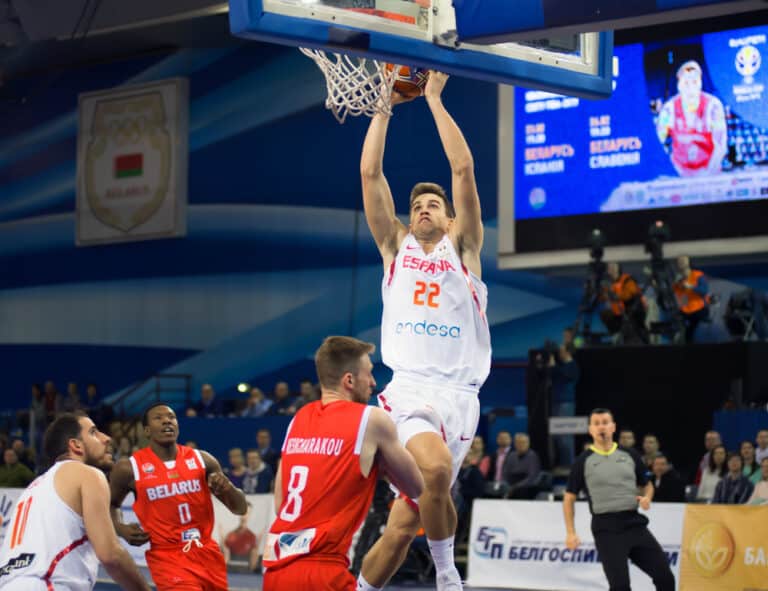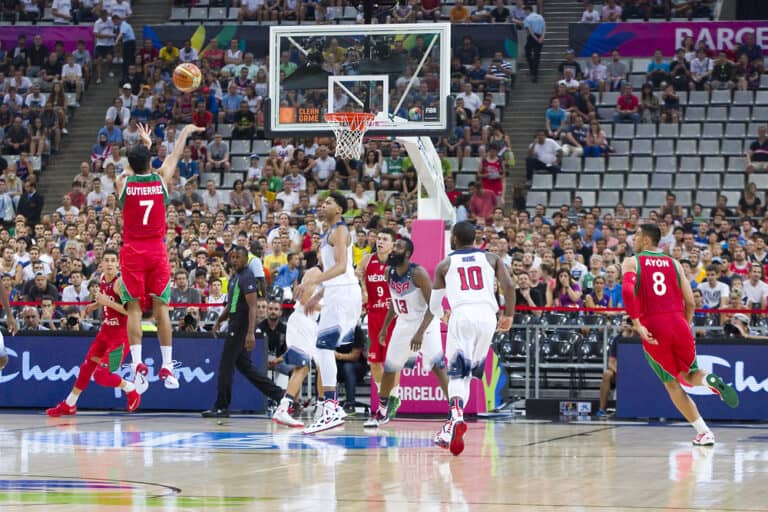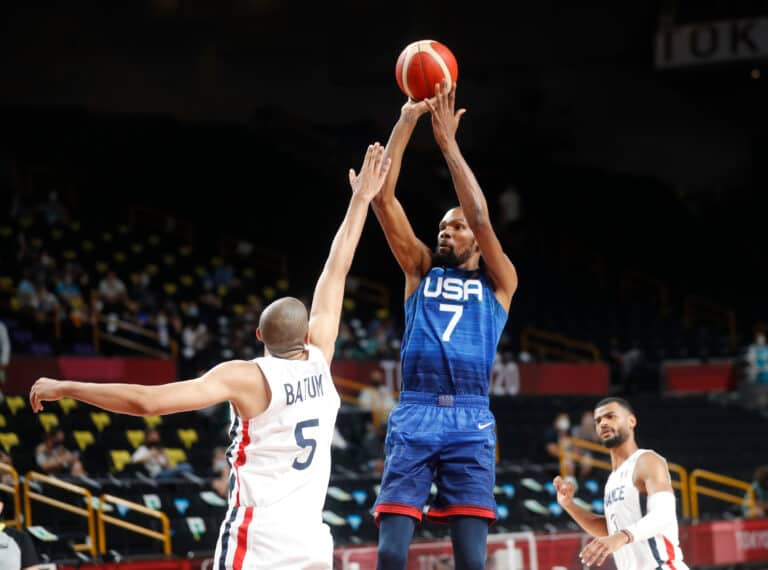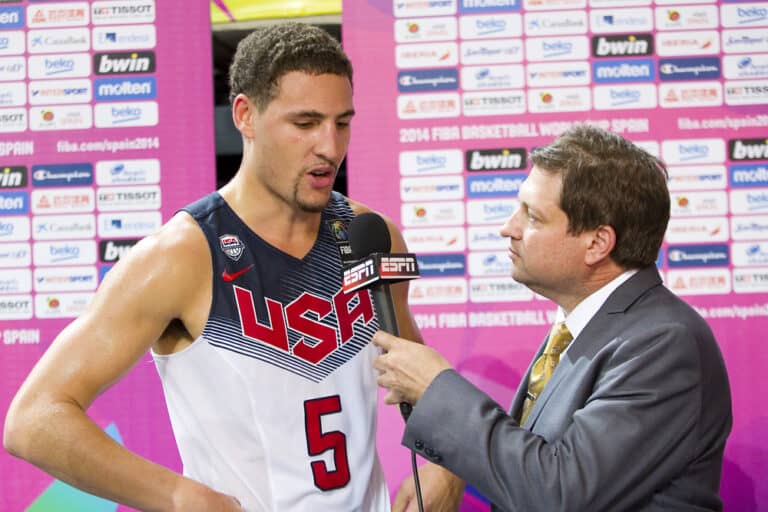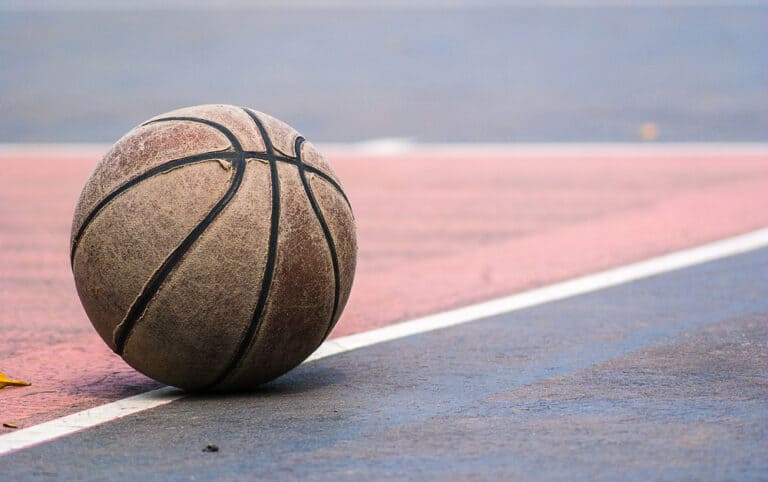Explained: How Long Basketball Scrimmages Last
Editorial credit: Fabrizio Andrea Bertani / Shutterstock.com
Basketball scrimmages are an invaluable tool for any team hoping to up their game and rise to the top. Considering their contribution to new strategies and winning games, how much time do teams and coaches allocate to scrimmages? Let’s look at the length and importance of basketball scrimmages!
Basketball scrimmages have no official duration, lasting 4-12 minute quarters and 30 – 120 minutes. Official scrimmages are usually between 60 – 90 minutes, while high school and college scrimmages are between 20 – 40 minutes. Coaches decide the duration of a scrimmage and set the quarter intervals according to the purpose of the scrimmage.
Coaches also play an essential part in determining the length of a basketball scrimmage. As with a regular basketball game, some things can cause scrimmages to drag on for longer. We’ll look at the factors that determine the average length of a basketball scrimmage, as well as the role that the players and coach play that affects the total duration of the game.
How Long Can A Basketball Scrimmage Last?
Official basketball scrimmages are typically closer to the length of ordinary matches, especially when the two opposing teams are professionals.
However, how long a scrimmage lasts is still at the coaches’ discretion. Coaches can extend or reduce the scrimmage times depending on what they believe will allow the players to perform at their best or produce the most accurate strategic results.
As such, coaches may have their players do shorter quarter intervals for short bursts of output that do not require continuous exertion. Other times they might want to simulate strategies and positions and have the players go for longer to experiment with the best player-strategy combinations and best results.
The two coaches may elect to do two 10-minute man-to-man drills before the scrimmage, which a zone segment, a pressing segment, and a 20-minute game would follow. After a lunch break, the teams might continue their work on specific on-court challenges or issues in the afternoon.
While a match is in progress, coaches may mix up positions to see which are most viable and whether they will be a good fit for their players. For instance, a coach may have their players do drills and work on plays for the first hour, followed by a scrimmage for the remainder of the time.
High school basketball scrimmages tend to be much shorter because they do not incorporate advanced techniques in the same way as college or professional teams. Outsmarting an experienced player usually takes considerable strategic play, with a lot of practice, good muscle memory, and flawless execution.
What Are Basketball Scrimmages Necessary?
A basketball scrimmage is a handy tool for players and coaches. It allows players to build chemistry amongst new additions to a team, rehearse plays, or assess individual player skills in a competitive setting.
For a basketball scrimmage to be successful, it can occur as a pickup game on a basketball game, during team practice, or against an opposing team.
Scrimmages are enjoyable for coaches and players because they’re more casual than official matches. Coach, in particular, has the opportunity to identify players’ strengths and weaknesses and incorporate strategic decisions that affect the chance of winning. Of course, coaches can use them to devise strategies, namely rotations and plays, and scout out the competition’s players.
Players, too, get to engage in a simulated experience that allows them to try different approaches they otherwise would not be able to when their focus is solely on winning.
When scrimmages occur between two rival teams, it’s a golden opportunity to identify potential gaps in defense or offense. It can be constructive when one team whose defense is weak practices against another whose offense is overwhelming.
Additionally, it lets players get to know one another’s personalities and playstyles, strengthening teamwork. Even though a basketball scrimmage is an organized competition, neither team’s results count toward their statistics.
What Kind Of Drills Happen In Basketball Scrimmages?
Coaches usually simulate drills specific to a team’s weakness to experiment and find a solution to strengthen them. For instance, a team plays well in the first 80 percent of a game, but their performance deteriorates significantly in the last 20 percent.
In this case, coaches may set up a simulation where players are one point ahead but need to stay on their toes to maintain their lead for 15 to 20 minutes. At this point, it will be easier for the coach to see whether it is an attitude issue, confidence, stamina, or even technique.
It may be that certain players don’t deal well with pressure and lose most of their accuracy when shooting. Having a simulation where there are five seconds left on the clock and the player needs to get through the opposition and shoot successfully will be good practice for them.
Other times coaches may want to work on the defense of offense from free throws or learn the timing on half or full-court traps.

What Might Extend The Duration Of A Basketball Scrimmage?
A scrimmage will generally take longer if you consider the times the clock stops and the intermissions during a game. Late in the game, when there are several free throws, timeouts, and fouls, it may seem like the clock is at a standstill.
Do Teams Record Basketball Scrimmage Scores?
Even though a basketball scrimmage is an organized competition, neither team’s results count toward their statistics.
Basketball scrimmages have no time limit, meaning coaches can have players play many halves or quarters rather than just one 40-minute game.
It allows the coaches to experiment with different lineups and allows new players and strategies to play through errors without being concerned about the game’s result.
Conclusion
Coaches often set the length of basketball scrimmages because they have enough leeway to have players play quarters from 4 – 12 minutes. Furthermore, they usually have an idea of what they want to accomplish and the time it will take the players to produce the results. High School scrimmages are the shortest, with College and professional teams playing for much longer.


